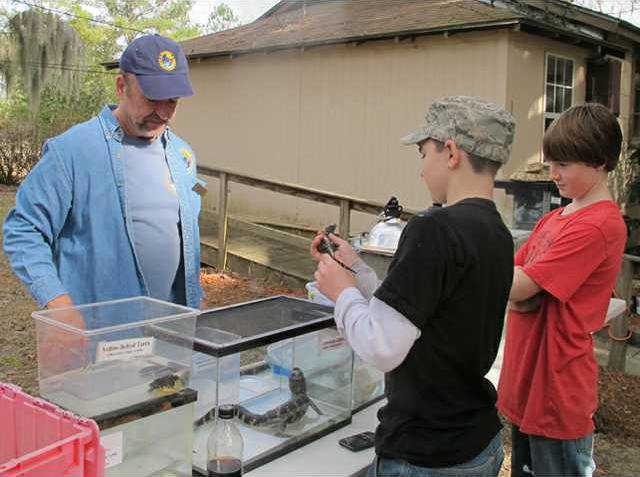During the early part of the 19th century, it was easier to move farm and timber products by water than land. Rivers and man-made canals were the highways of early Georgia.
The Savannah-Ogeechee Canal became one of those highways.
With the completion of the Erie Canal in 1825, local political and business leaders realized the economic impact a similar canal connecting the Savannah River and Ogeechee River would have on the state’s economy.
The Savannah-Ogeechee Canal was constructed between 1826 and 1830 by 600 African slaves and Irish immigrants. They moved thousands of cubic yards of dirt, creating six locks that began at the Savannah River and ended at the Ogeechee River.
Timber, cotton and rice began moving through the 16.5-mile canal, making it an economic boon to the Coastal Empire.
The Savannah-Ogeechee Canal Museum & Nature Center now sits near lock No. 5 just off Highway 204 about 2.5 miles from Interstate 95. On a recent Sunday, museum curator Chica Arndt welcomed couples and families to an array of static displays as well as video and slide presentations about the area’s history.
“The event schedule included a canal history and archaeology tour, French influence in Savannah, winter bird walk and a nature walk,” Arndt said. “All-day events included a reptile zoo, an American Indian culture and crafts exhibit, Urbanna organic farms and Ogeechee Outpost Canoes. There was also cane grinding, corn milling and turpentine gathering.”
The history presentation noted the canal cost investors more than $175,000, which in today’s economy is equivalent to about $7 million. Even though the canal quickly became a boon for the region’s economy, its original investors were bankrupt by 1836. The canal closed for a short while but later reopened and thrived until the Civil War.
After the war, an 1876 epidemic of yellow fever in Savannah was blamed on the canal, but the canal continued to be used until the 1890s and the arrival of the Central of Georgia Railroad.
Arndt said people don’t realize the French influence on Savannah, both in culture and local names. She said that influence was developed for more than 100 years with three major waves in French or French-speaking people.
The first wave of French-speaking people came with Gen. James Oglethorpe in 1733. Oglethorpe created four towns on the west side of Savannah for protestant refuges from the French-speaking part of Switzerland as well as protestant refuges from Germany. These towns extended from present day Bull Street and White Bluff Road to the area where the Savannah Mall is located.
The next wave of immigrants to Savannah came in the 1790s. Many of the refugees from the French and Haitian revolutions who came here had served here as allies during the American Revolution.
The last wave of French-speaking immigrants came from Canada and Louisiana in the late 19th century with the start of the sugar-refining industry.
Arndt said some well-known family names in this area have a French connection, names like the Duggar or Dugger families, which is derived from DuGarde. The Isle of Hope originally was called “Ile de Bonne Esperance” by a man named Dupon.
After watching the history presentations, visitors examined the artifacts inside the museum. Outside, a large group of bird watchers followed a trail that ran alongside the canal.
Evan Worden, 13, and C.J. Miller, 11, expressed their fascination with the snakes, turtles and alligators that U.S. Fish & Wildlife volunteer Rick Shields had on display. Emily Smith, 6, and Haley Deal, 10, preferred to learn about yoga from Connie Shreve of Ogeechee Outpost.
“I do a canoe camp every year for kids,” said Shreve, a certified canoe instructor. “I do yoga classes every day though. It’s for kids too.”
Shreve said her canoe camps are conducted the last two weeks of June and July. Ogeechee Outpost is located at Morgan Bridge on the Bryan-Chatham County line, she said.
The Savannah-Ogeechee Canal Museum & Nature Center is open 9 a.m.-5 p.m. Saturdays and noon-5 p.m. Sundays.
Admission is $2 per person.
Canal museum samples simpler life
Savannah Ogeechee Canal Museum is nearby


Sign up for our e-newsletters